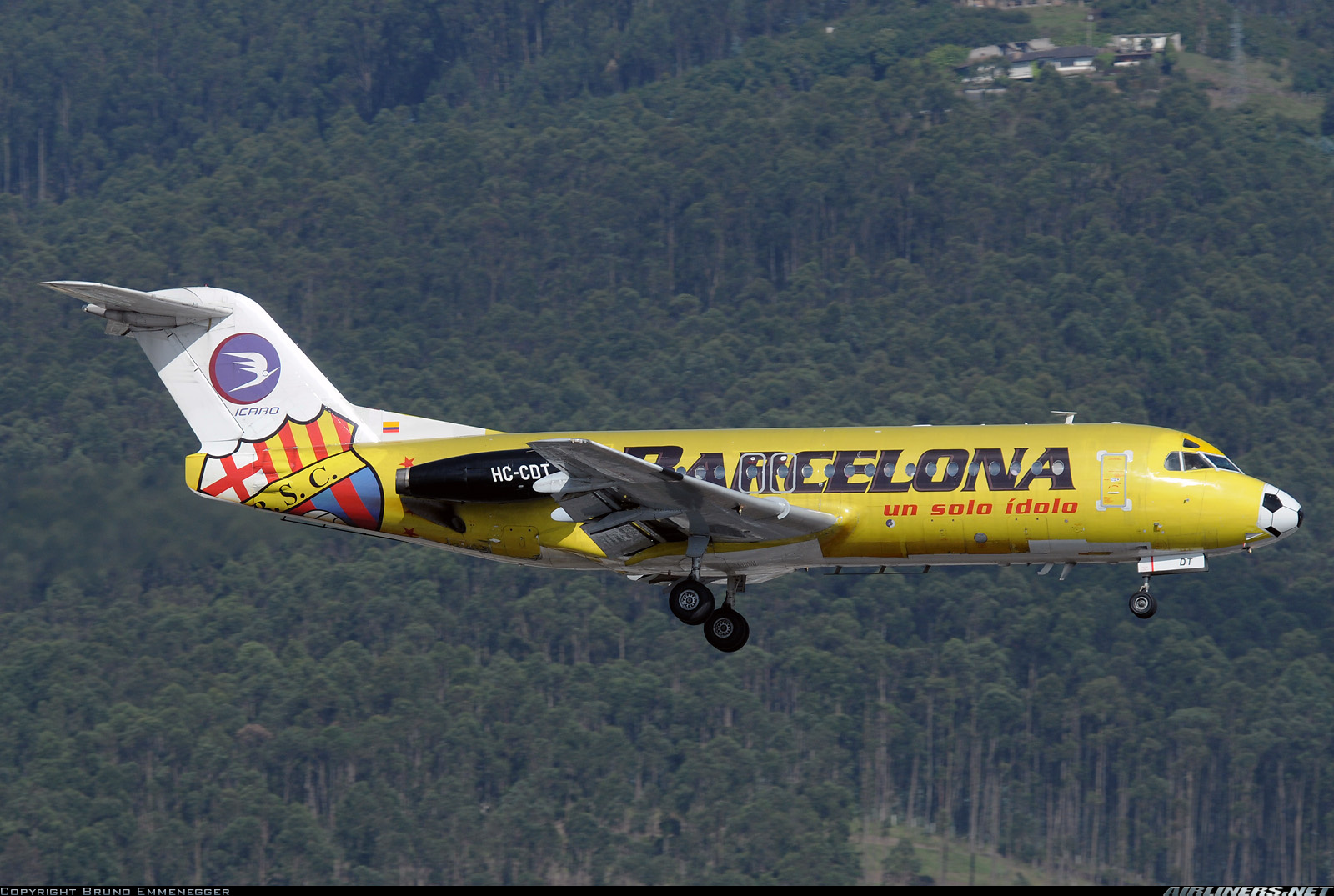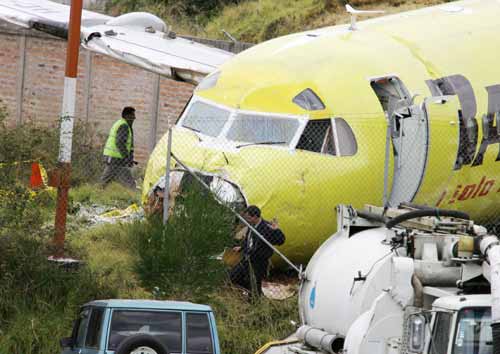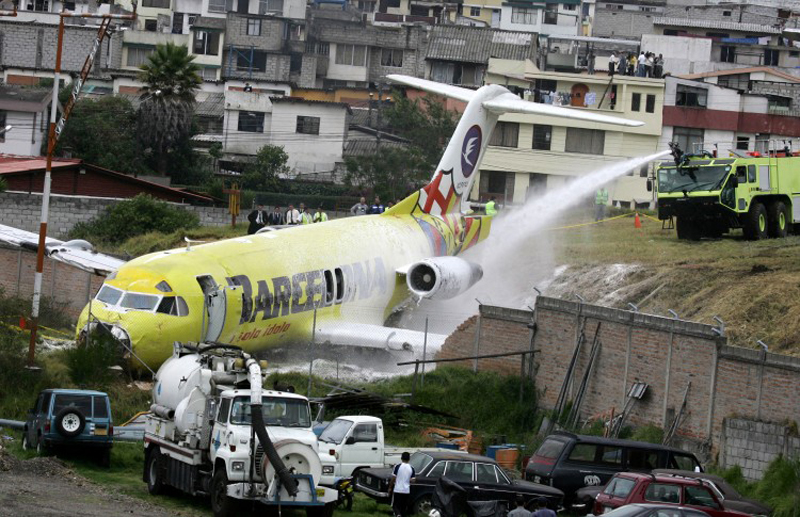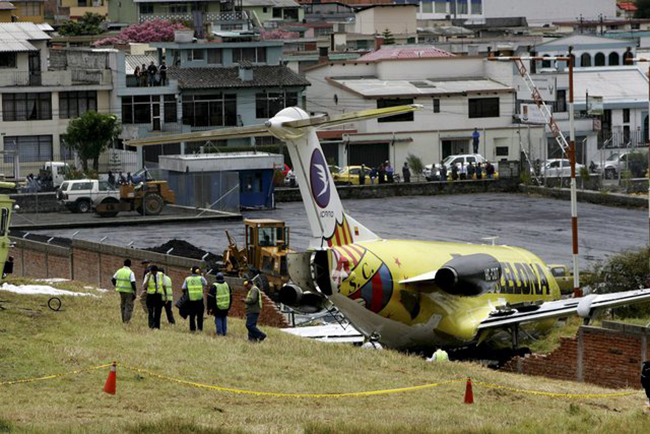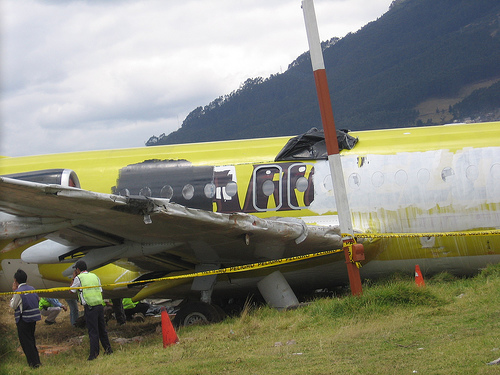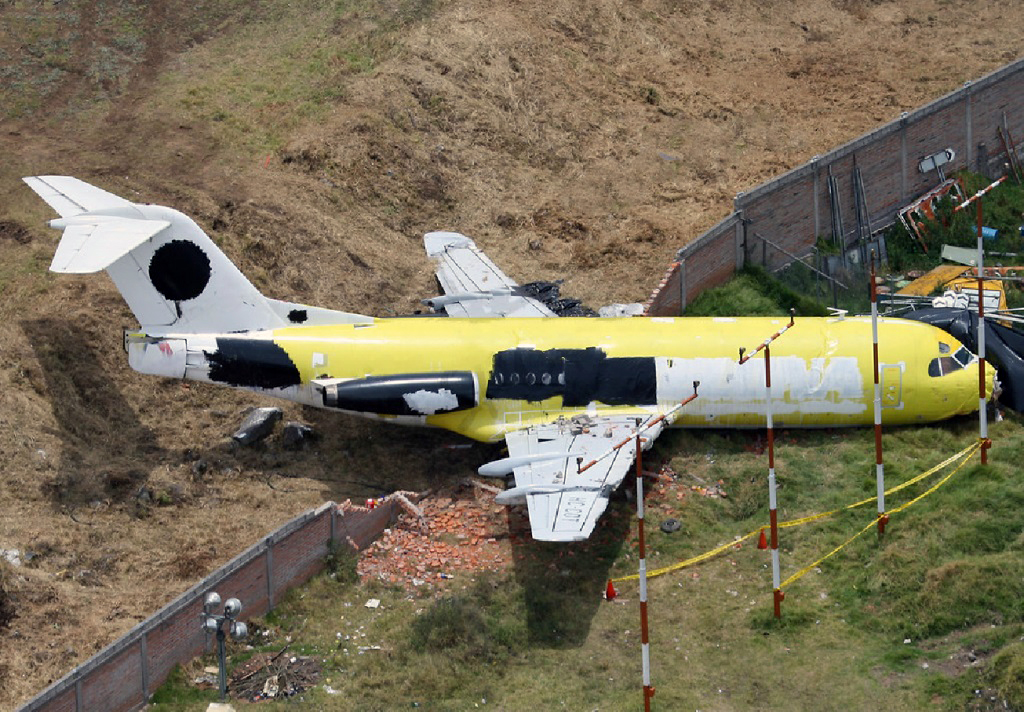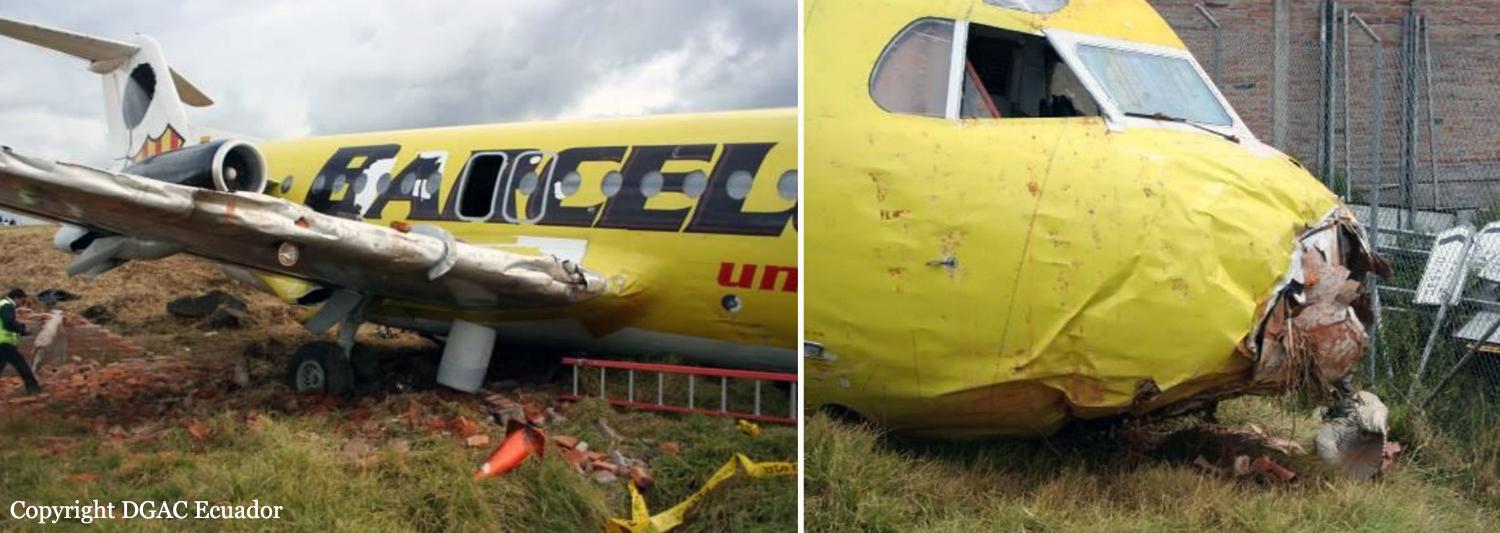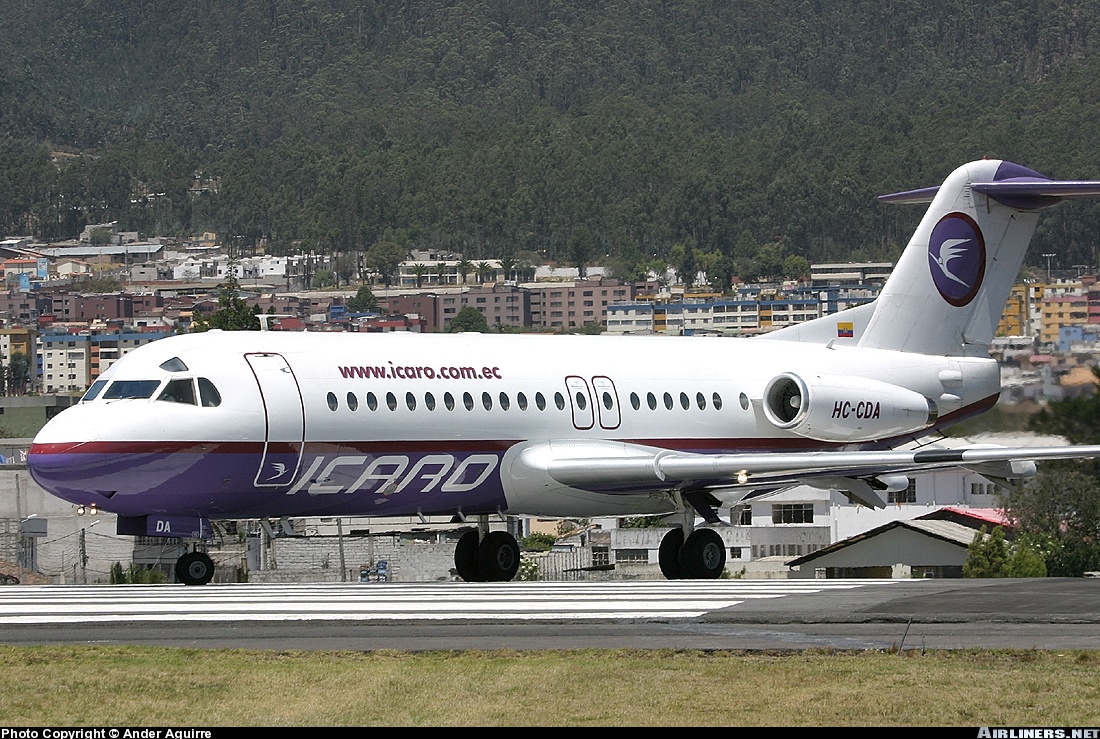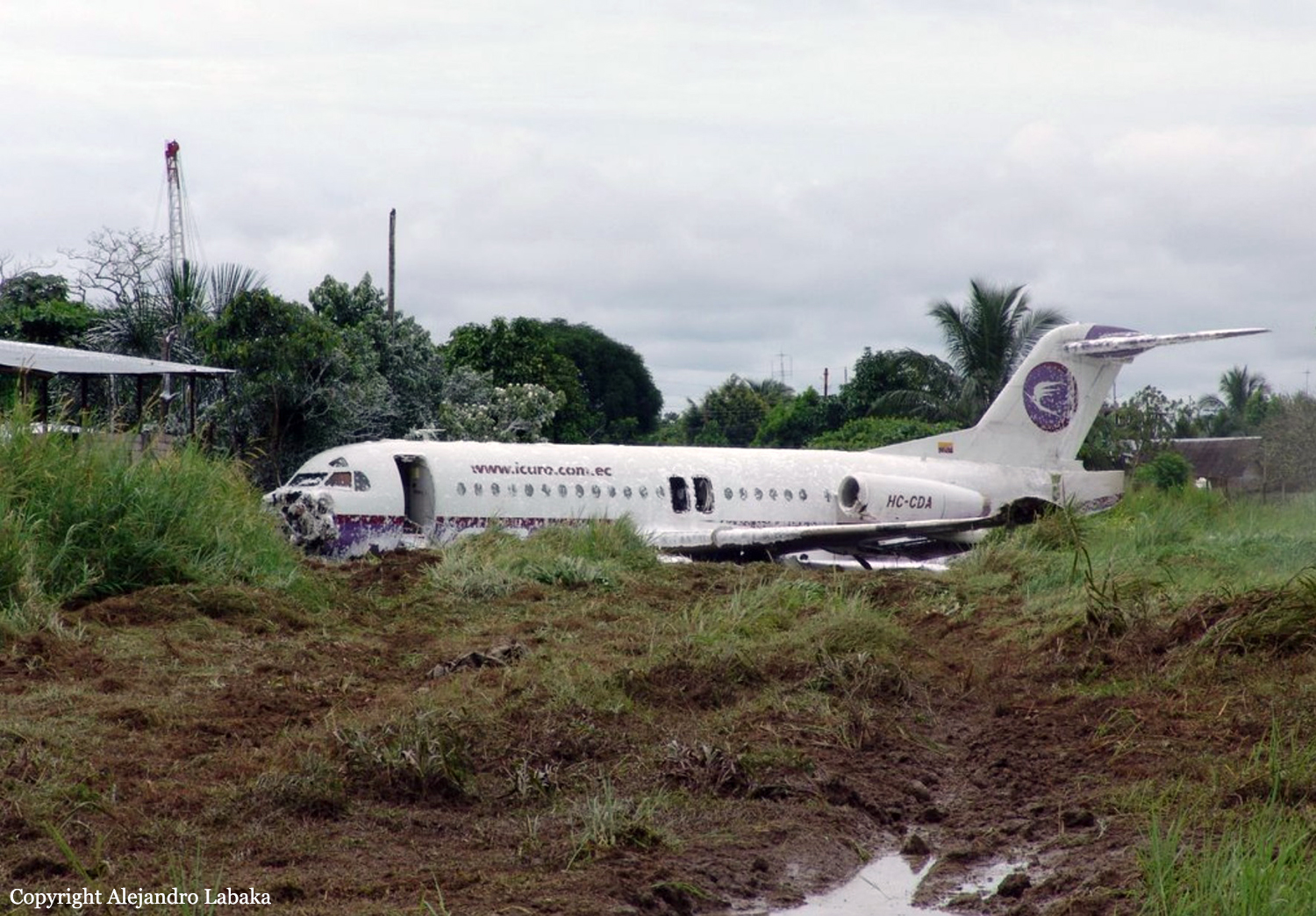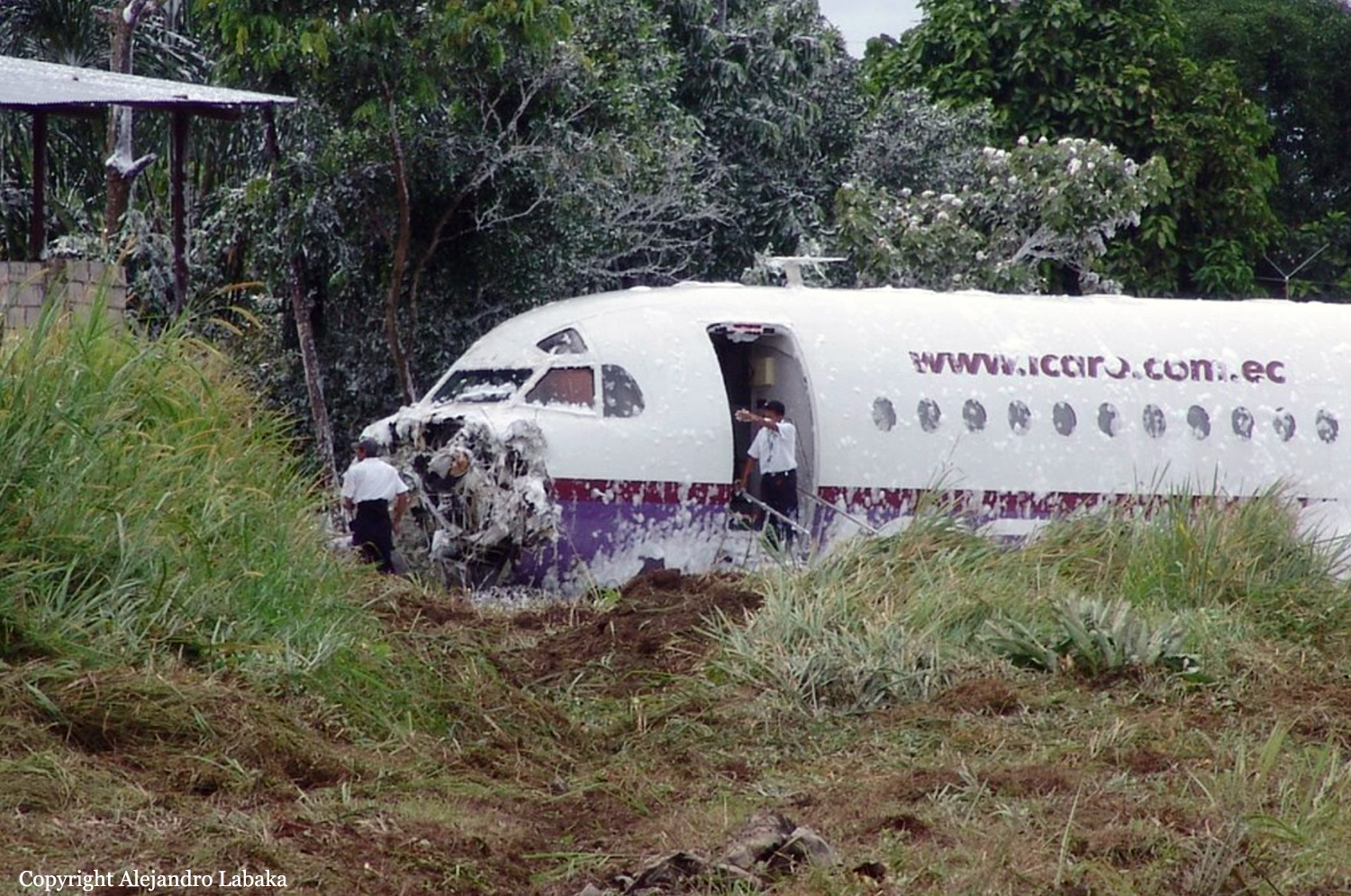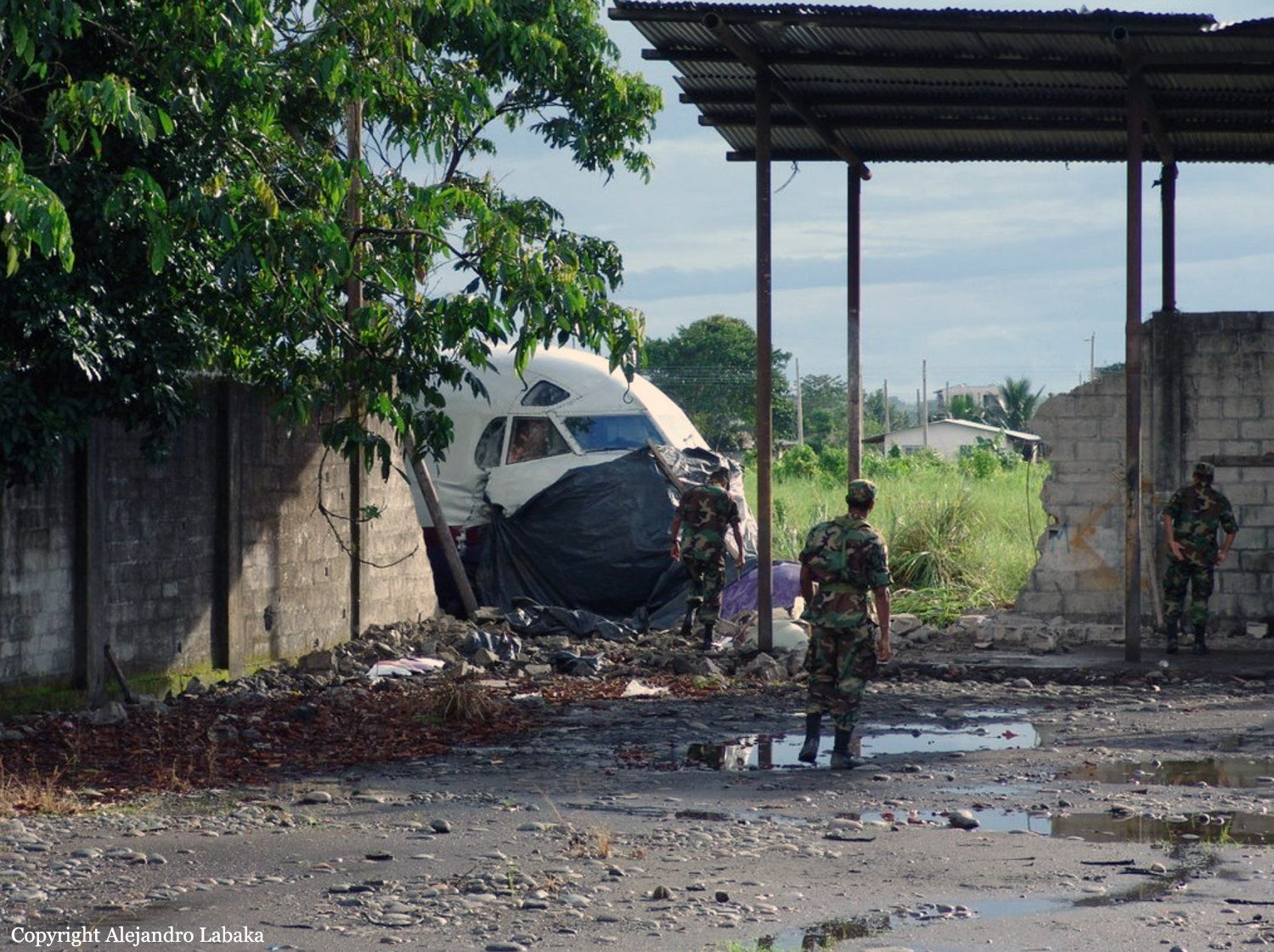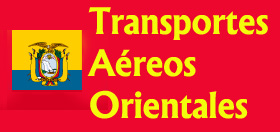Crash of a Fokker F28 Fellowship 4000 in Quito
Date & Time:
Sep 22, 2008 at 1115 LT
Registration:
HC-CDT
Survivors:
Yes
Schedule:
Quito – Coca
MSN:
11222
YOM:
1985
Flight number:
ICD504
Crew on board:
4
Crew fatalities:
Pax on board:
62
Pax fatalities:
Other fatalities:
Total fatalities:
0
Captain / Total hours on type:
109.00
Copilot / Total hours on type:
380
Aircraft flight hours:
42422
Aircraft flight cycles:
47727
Circumstances:
During the takeoff roll from runway 25 at Quito-Mariscal Sucre Airport, the crew noted a fire alarm connected to the forward cargo compartment. The captain decided to abandon the takeoff procedure and initiated an emergency braking manoeuvre. Unable to stop within the remaining distance, the aircraft overran, collided with the ILS antenna, went down an embankment then impacted a brick wall and came to rest 300 metres past the runway end. All 66 occupants were rescued, among them eight passengers were injured. The aircraft was damaged beyond repair.
Probable cause:
Failure of the crew to follow the published procedures following a fire alarm, as stated in the Operations Manual and the late application of the procedures once the decision to abort the takeoff was taken.
Contributing factors:
- Complacency on part of the crew who failed to proceed with a pre-takeoff briefing,
- A fact that influenced the lack of appropriate action from the crew to successfully tackle any emergency,
- Lack of crew resources management,
- The braking coefficient was low because the runway surface was wet.
Contributing factors:
- Complacency on part of the crew who failed to proceed with a pre-takeoff briefing,
- A fact that influenced the lack of appropriate action from the crew to successfully tackle any emergency,
- Lack of crew resources management,
- The braking coefficient was low because the runway surface was wet.
Final Report:
